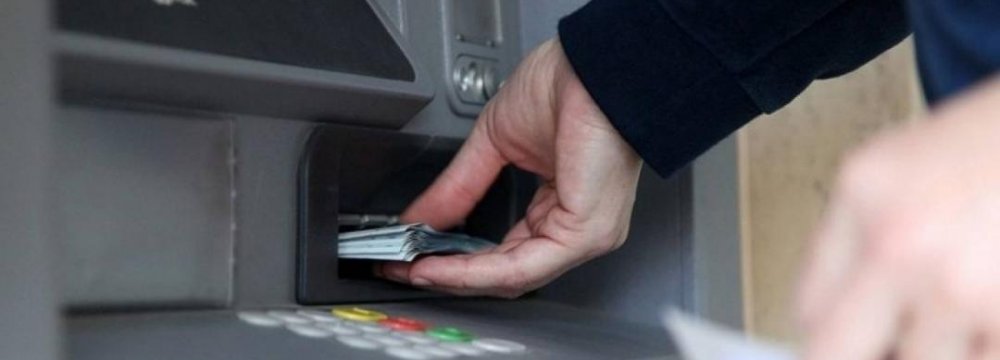The second phase of the subsidy reform plan coincided with a rise in prices of energy-laden products and registration of households for the second term of the government’s financial support. The number of people who declined to register was few despite the government expectations. It was hoped that a substantial number of people would voluntarily pass on the offer to receive the aid. It would have been a better option instead of the government having to identify those who do not qualify as “disadvantaged households” through cumbersome procedures.
This optimism, however, did not materialize. This was the context of an amendment by lawmakers to the budget law, making it obligatory for the government to identify the disadvantaged households. The amendment defined in fact two prerequisites, namely “the claimant” and the “disadvantaged.” The first prerequisite was materialized when the households registered over the internet by the mid February, 2014, but the implementation of second part pushed the government into a complex situation.
The “disadvantaged” had not been specified in a broad definition and was used in its general form, based on the annual income of the households. The appropriateness of the reference was controversial and questionable.
Household Income a Proper Reference for Evaluation?
The monetary income of the family could not be a proper reference to evaluate its economic condition. Consider a family comprising 4 members residing in Tehran and living in a rented house that earns 25 million rials (almost 900 Dollars) a month. Now compare it with a family of say 2 members with an income of 17 million rials that owns the home. Could it be a right comparison?
When there are plenty of ambiguities regarding unreliable statistics about the household incomes, how is one expected to come up with the actual facts on the ground?
In the questionnaire posted online regarding the second phase of subsidies payouts to the households, there was a question about the applicants’ residence. Obviously the value of house varies depending its location and neighborhood. Therefore the evaluation of the house value for the household can well be the subject of considerable controversy; as is the case for declared incomes. Various studies conducted all over the globe have shown that people tend to understate their real income. This act of playing down the amount of income varies depending on the class of people and their income levels. The incomes of people who receive salaries are likely to be the most precise compared to those who are self-employed. But even in the case of people with fixed wage, employers submit lower income for their workers in a bid to escape high cost of insurance and taxes. The declared wages are reduced to the least possible values where as real payments might be much higher than the listed amounts.
Hence, obviously the collected data cannot reliably determine the real “disadvantaged household” and it would require the government to access other sources for its final analysis.
How many are Not in Need of Financial Support?
“In need of financial support” is an ambiguous phrase. It can be translated to refer to families that cannot survive on their own or those with the least level of livelihood, which is reminiscent of a similar definition for the absolute line of poverty. In reality, this class of society forms only a small percentage, even if such a reference concurs with international norms and experiences in economical systems.
The registration of almost 90% of households in the second phase of the targeted subsidies reform indicates that many families see themselves as “in need” for the financial aid. On the other hand, evaluation of the expenses and incomes of households in recent years indicates that these financial aids compensate for a substantial amount of expenses. The cash handouts to almost 90% of the families during the year 2012 formed almost 10% of their gross income, which is significant.
With the declining value of the national currency, it’s expected that almost 75% of families will be expecting more than 10% of their expenses to be compensated through the financial support.
The recent stagflation has drastically reduced people’s purchase power and taking away the aid from many families does not bode well for them.
Sensitivity of the Line Separating the Rich From the Middle Class
And then there is the issue of families comparing themselves with others within the same class and the spontaneous reactions shown in case of any discrimination in distribution of the aids as some may think they deserve more. Although this is a natural reaction, it might have social consequences since middle class constitutes a huge section of the Iranian society.
The big part of the Iranian population (about 85%) is considered to be middle class in one way another. About 10% are poor households and to the best of reliable estimates 5% of the families are said to be wealthy. Various factors such as the number of overseas trips, imported cars owned are used to determine this social classification. These estimates correspond with the available data of income and expenses, which considers wealthy households to be less than one million.
Pros and Cons of Financial Support
The benefits of removing the wealthy from the list of recipients of financial support are obvious. The omission would mean a release of almost 350 billion rials (12billion dollars) from the financial support resources. But the expenses and disadvantages must also be taken into consideration. Past experiences have indicated that the reaction of people towards such matters does not necessarily follow a logical path.
A concentrated study of the statistics shows that almost 80 to 85% of Iranian households fall within the middle class category. Any signs of discrimination and segregation within the wide class spectrum, will lead to social unrest. That means some household may feel being discriminated if they see other families within the same class enjoy a better financial statues and facilities.
Iran’s economy has been ditched into stagflation since 2010. The most affected are the families who belong to the lower classes of society. That means those who were expected to refrain from the registration as expected by the government were the people who suffered the most during the last four years.
These households, despite the fact that they are not poor, when compared with their class level have become poorer.
Apparently, the government has made the right decision to opt for the second phase of price hike of energy-laden products, irrespective of the anticipated social discontent, which could have taken place, because of the omission of the financial support to the wealthy.





